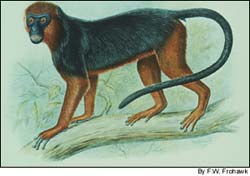Woodpeckers carry fungus in beaks that promotes tree decay
A new study in the journal Condor by the New York-based Wildlife Conservation Society (WCS) and Arkansas State University suggests that a woodpecker’s beak is a virtual petri dish of fungal spores that play a key role in the decay of dead trees, or “snags.”
The authors examined several species of woodpeckers living in ponderosa pine forests in northern California and Oregon, finding that over 60 percent of the sa
Draw a picture on the computer and it immediately shows up on the screen of a hand-held computer in Africa. The person with the palm computer can then use the tiny screen to access a supercomputer in France to perform advanced graphic calculations that a number of logged-on people can see simultaneously. This solution is called Verse, a new protocol for 3D graphics created by a 27-year-old with no previous knowledge of programming at the Royal Institute of Technology (KTH) in Stockholm. Verse was re
Although there are numerous telescopes – both large and small – examining the night sky at any one time, the heavens are so vast and so densely populated with all manner of exotic objects that it is extremely easy to overlook a significant random event. Fortunately, a new generation of scientific instruments is now enabling UK astronomers to prepare for the unexpected and become leaders in so-called “Time Domain Astrophysics”.
Exciting new observations of many different, time-variable celest

After years of searching for a rare African primate, anthropologist Scott McGraw and his colleagues believed that the Miss Waldron’s red colobus monkey, Procolobus badius waldroni, was probably extinct. They had written a paper in 2000 saying so.
But recent hard evidence of the Miss Waldron’s red colobus’ existence has rekindled McGraw’s hopes of finding the primate, reportedly last seen in 1978. McGraw, an associate professor of anthropology at Ohio State University, det
Scientists have discovered just how a genetic defect disrupts the cellular “garbage disposal” of a cell, resulting in a horrific childhood disease that kills most patients before the age of 25.
For nine years researchers have known the precise genetic flaw that causes Batten disease. But understanding how a straightforward mistake in life’s blueprint translates to a disease that ravages roughly 1,000 children in the United States each year has been a challenge. Now, in a paper in the D

Scientists are finding a computer program called Elves to be a nearly magical solution to the tedious and time-consuming task of determining the 3-D shape of proteins – a major focus of cutting-edge proteomics today – from X-ray diffraction data.
According to Elves developer James Holton, who recently received his Ph.D. from the University of California, Berkeley, researchers can unleash Elves on a set of X-ray diffraction data and go on to other things – or take a nap – while the computer